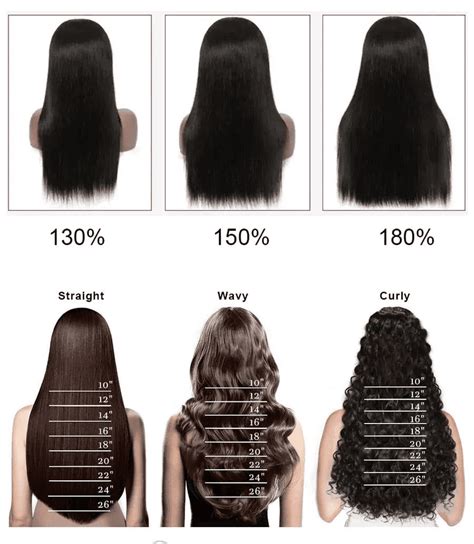Introduction:
Achieving a natural-looking wig requires careful consideration of hair density. 180 density wigs offer a balance between volume and breathability, making them a popular choice among wig enthusiasts. This comprehensive guide will delve into the intricacies of 180 density wigs, exploring their benefits, drawbacks, and maintenance tips.

What is 180 Density Wig?
Hair density refers to the number of strands of hair per square inch. 180 density wigs have approximately 180 strands per square inch, providing moderate volume and realistic movement. This density level mimics the natural thickness of most human hair, creating a seamless blend with one’s natural hair.
Benefits of 180 Density Wigs:
- Natural Look: 180 density wigs replicate the appearance of natural hair, avoiding the overly thick or thin appearance that can occur with other density levels.
- Volume without Bulk: The moderate density provides enough volume to create a full, flattering look without feeling heavy or uncomfortable.
- Versatility: 180 density wigs are suitable for various hairstyles, from sleek bobs to voluminous curls.
- Breathability: The slightly lower density allows for better air circulation, preventing scalp irritation and discomfort.
Drawbacks of 180 Density Wigs:
- May Not Suit All Hair Types: 180 density wigs may not provide enough volume for individuals with naturally thick hair.
- Requires More Maintenance: The slightly higher density requires more frequent brushing and detangling to prevent matting.
- Prone to Tangling: The increased hair count can make 180 density wigs more prone to tangling, especially in windy conditions.
Maintenance Tips for 180 Density Wigs:
- Brush Daily: Use a wide-toothed comb or a brush specifically designed for wigs to gently detangle and remove any debris.
- Condition Regularly: Use a moisturizing wig conditioner to keep the hair soft and prevent dryness.
- Avoid Heat Styling: Excessive heat can damage wig fibers, so limit the use of heat styling tools.
- Store Properly: When not in use, store your 180 density wig on a mannequin head or in a wig box to maintain its shape.
Comparing 180 Density Wigs to Other Densities:
| Density | Strands per Square Inch | Pros | Cons |
|---|---|---|---|
| 120 Density | 120 | Less volume, breathable | Can appear thin |
| 150 Density | 150 | Moderate volume, natural look | Less airy than 120 density |
| 180 Density | 180 | Natural volume, versatile | Requires more maintenance |
| 200 Density | 200 | High volume, full look | Can be heavy and uncomfortable |
Common Mistakes to Avoid:
- Choosing the Wrong Density: Selecting a density too low or too high can result in an unnatural appearance or discomfort.
- Overusing Heat Styling: Excessive heat can damage wig fibers and shorten the wig’s lifespan.
- Neglecting Maintenance: Regular brushing and conditioning prevent tangling and maintain the wig’s appearance.
Frequently Asked Questions (FAQs):
- How often should I brush my 180 density wig? Brush your wig daily to remove tangles and debris.
- Can I color or bleach a 180 density wig? Yes, but consult with a hair professional to avoid damaging the wig fibers.
- How long will a 180 density wig last? With proper care and maintenance, a 180 density wig can last up to 6-12 months or longer.
- Can I sleep in a 180 density wig? It is not recommended to sleep in any type of wig, as it can cause damage to the fibers and discomfort.
- How do I determine the correct 180 density wig size for me? Measure your head circumference and refer to the manufacturer’s size chart.
- Where can I find high-quality 180 density wigs? Reputable wig retailers, online and offline, offer a wide selection of 180 density wigs.
Conclusion:
180 density wigs offer a versatile and natural-looking solution for individuals seeking a wig with moderate volume and breathability. By understanding the benefits, limitations, and maintenance tips outlined in this guide, you can make an informed decision about whether a 180 density wig is the right choice for you. Remember to consult with a hair professional if you have any specific concerns or require additional guidance.
